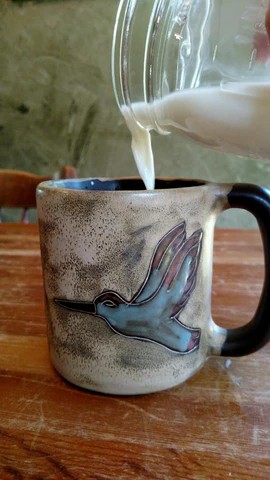
There are so many beautiful soaps for sale these days, so why would anyone want to buy a “natural looking” bar of soap? What’s the difference between colored, sparkly soap and soaps made with all natural clays and minerals?
I have been mulling this concern over and over in my head for months now. I want everyone to feel as good as I do every time they use my soap. That said, I don’t want to compromise the quality of my soap by making it prettier just to increase profits.
As a soapmaker, I expect a certain level of quality and consistency, and I’m sure that my customers do, too. Each batch may look a little different from the previous one, but my personal recipe remains the same from batch to batch.

That will not change. The essential oils and blends are the same because I purchase from reputable suppliers.
The change in a fragrance oil. For example, citrus splash has been the most recent change. My fragrance supplier has closed the doors permanently, leaving me with the job of finding a new supplier. Well, I found one and I love the fragrance. My guys at home even like it. My husband, Jim, even said, “I would use that”. Now that’s progress!
However, the new citrus splash fragrance has a combination of orange, grapefruit, pineapple, and vanilla. The addition of vanilla has had a significant, visual impact on the final product. Vanilla darkens cold-process soap during saponification, with most of the darkening happening during the curing phase.

Now what do I do? My customers are going to be confused. The citrus splash soap they normally purchase isn’t the same color. Now it’s a dark, warm brown.What begins as a creamy tan bar of soap ends up looking like smooth, brown chocolate. The darker color resembles my seasonal warm vanilla sugar soap that I make each fall.

Goat milk is a white/cream color when it is milked from the goat and the saponification process in making soap heats the milk and makes it darker. Darker is still natural. The oils in my soap vary from the olive oil green to the coconut oil off white, and the butters in my soap are not white because they are unrefined. When you start out with less white ingredients in a batch of soap, how could anyone expect the final product to be white.
What makes the soap white is a whitening ingredient called titanium dioxide. I have tried it. Then I learned that it is also used in paint. So, if you want to be white, paint your skin, and then use my coffee soap when you would like to scrub it off. Hmmmmm… essential scrub will work nicely, too!
I know about all of the tricks of freezing the milk before use and almost freezing it to make it stay a little lighter. How important is that lighter color if it means you have to change the milk before you can use it? I don’t consider that type of manipulation to be the same description as the “raw” goat milk that I use in my soap. I have never frozen my goat milk. It is straight from the goat! That is natural goat milk soap.
Cold process soapmaking is the process of combining oils (olive, coconut, sunflower) with an alkali (sodium hydroxide, commonly called lye). This mixture of oil and lye changes the composition of the oils and creates a bar of soap. This chemical process is called saponification. No heat is applied during saponification, so the soap is cold process soap.
The last and most important part of cold process soapmaking is the curing time. Cold process soap must sit at room temperature for four weeks to allow the soap to dry and harden. A hard bar of soap lasts longer.
To be honest, I have had several compliments on the new soap, but I still feel like there will be confusion. I am working on a solution though. How about pretty soap wrappers? The soap will display nicely, the wrapper will clearly label the fragrance and the soap’s natural beauty won’t be hidden.
Should I compromise the quality of my soap to make it prettier? I am willing to experiment with clays, minerals, and herbs for coloring in the soap, but I am not willing to try to make the final product less tan or brown.
The soapmaking process does change the soap to more muted colors and, no, I won’t add all of those dyes and colorants to give the soap the beautiful, vivid colors.
But, if I find a way to make those gorgeous colors within the terms of my definition for natural, then I am so ready to try. Until then, the answer is NO. I am not willing to compromise the quality of the ingredients and finished soap products to make them pretty.
Naturally Yours,
Laura

Get Free Shipping On Orders Over $50